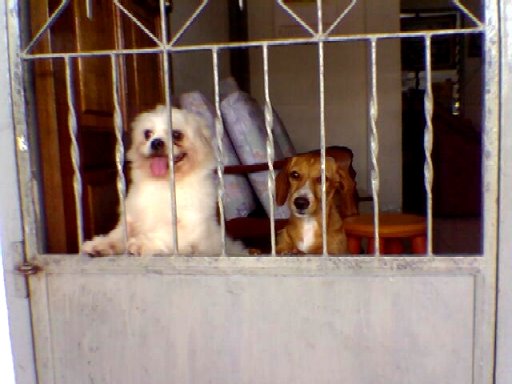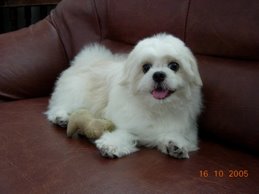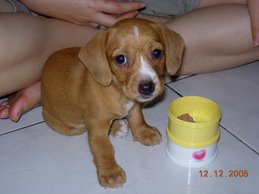The Right Dog Food Can Make All The Difference
It's impossible to resist those eyes, that tail,
the tender affection your dog has for you. The
value your dog adds to your life ought to be
returned with more than affection. Just like in
your own life, a canine needs proper exercising
and a proper diet. And diet is often the hardest
part of the equation-- just like it is for us
himans.
Most of us don't spend nearly enough time
thinking about how we feed our pets. It's so
tempting just to buy the best dry kibble
available, pour it in your dog's bowl, and walk
away. Even worse, it might be easy to "throw
them a bone" every once in a while from our own
plates, potentially damaging your dog's
digestive tract.
In order to feed our dogs right, it's important
to understand what a dog needs in the way of
nutrition. You'd be surprised at how standard
store options may not be the best option for
your pet. Read on to learn about the types of
dog food, amount of food your little one should
be chowing down, and the nutritional content of
optimum dog food.
Types of Dog Food
Essentially, it boils down to dry food, wet
food, organic food, and "other." Dry food, also
known as kibble, is the most commonly thought of
option. Cheaper varieties are often loaded with
filler carbs and glutens, which in the long term
are as unhealthy for your animal as they are for
humans. Wet food often contains less fillers and
more protein. It's important to make sure that
wet food doesn't sit out too long, however, as
it will acquire dangerous bacteria quickly.
Organic food is an elusive label, especially on
dog food. There's no tightly held definition for
"organic" dog food, so it's important to do your
homework. "Other" foods include uncommon
varietals like doggy treats, pig ears, baked
goods, etc. Quality and nutritional value varies
widely, so those options won't be discussed in
depth here.
Amount of Dog Food
Three key metrics should be considered as you
decide how much you will feed your dog: age,
sizebreed, and how active your pup is.
Puppies should be fed three to five times
daily. The frequency of feedings should decrease
as your hound reaches maturity, until you
generally feed it twice a day. The amount of
food should be determined by Fido's size, breed,
and activity level.
Nutrition in Dog Food
The nutritional content of dog food is too
often subjugated to its price tag. However, if
you want your dog to last you for a long time,
learn to read those labels! Dry dog food
contains fillers, glutens, and empty
carbohydrates. We should avoid cheap dry food
like we avoid feeding our own bodies processed
foods: those empty carbs are processed into
unhealthy fats, and may result in higher cancer
rates and other health problems. The first
ingredients you should see in your dog's food
should be meat.
It doesn't matter whether you select kibble,
wet, or organic pet food. The best vittles for
your canine will contain the right nutritional
content in the right amount. A long, happy
healthy relationship between you and your pet
starts with a proper diet.
----------------------------------------------------
This article gives a brief breakdown of dog food
available on the market, if you have any doubts
about the right food for your pet, talk to your
vet. Resourced
http://www.dodsonandhorrellpetfood.co.uk
EasyPublish this article: http://submityourarticle.com/articles/easypublish.php?art_id=236351
>













.jpg)






.jpg)

1 comments:
Nice blog.. Keep up the good work !
Dog Food
Post a Comment